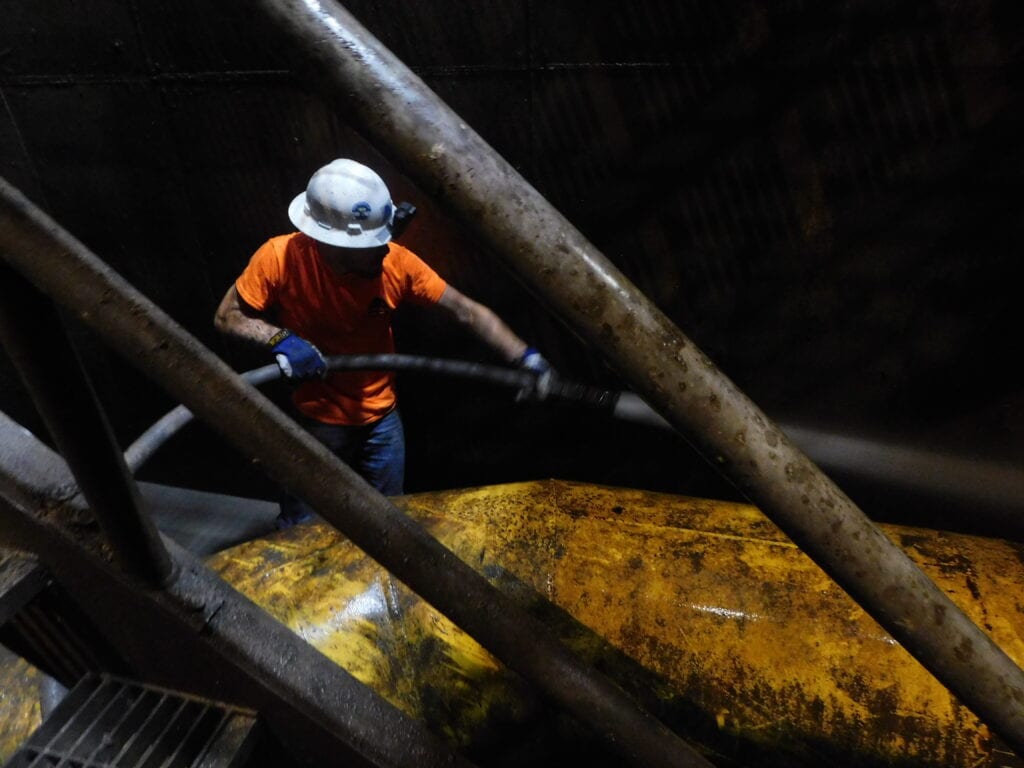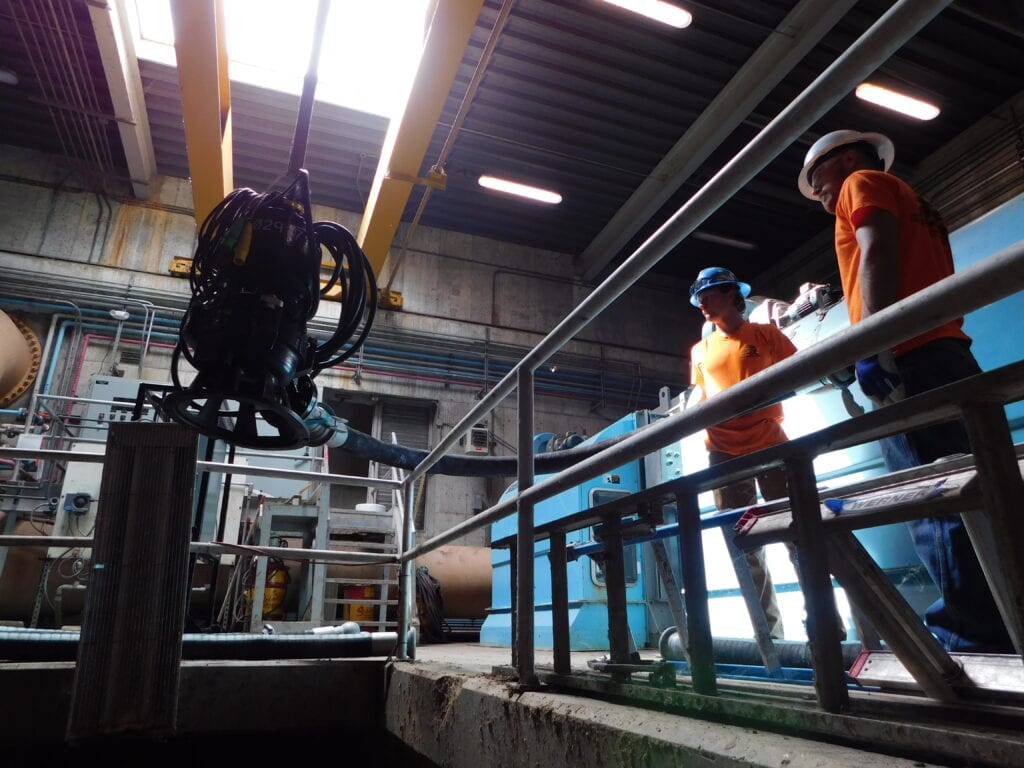Often a project takes some real ingenuity from Environmental Works, Inc. (EWI) to complete. Such was the case with a wet well cleaning at a massive water treatment plant in northeast Kansas.
Water from the Kansas River is pumped through pipelines into the water treatment plant via wet wells. The water is then filtered and distributed to residential and commercial customers for consumption.

EWI Heavy Equipment Operator Kyle Fondren cleans the wet well using a fire hose.
“The wells are located 70 feet down from elevation at river level,” Paul Ballance, EWI Operational Specialist and Site Supervisor, said. “Each well has a 60-inch pipe coming into it from the river. The water is filtered through mesh that kicks back rocks and trees and turtles. This debris is kicked back through a 40-inch pipe to the river.”
EWI cleans each of the facility’s 16 wet wells “every five years or so” on rotation, according to Ballance.
“They (the facility) can only shut down one wet well at a time,” he added.
Adding to the cleaning challenge is the fact that the center pit of each wet well is located six stories below the facility’s ground level. But EWI has over eight years of experience cleaning the wells and center pits. For this particular well, Ballance and Operations Manager Tyler Cassil put together a plan to lower a grinder pump and run all equipment down to the dark depths of the well’s center pit.

EWI Field Supervisor Bryan Biggs (left) lowers the grinder pump.
The five-member field services crew on site lifted the wet well’s metal shell of a roof using hooks and chains attached to an EWI-owned crane truck. With the roof removed and laid aside, the Kansas City-based team attached the 480V Grinder Pump to the crane truck and lowered it two stories to the main level of the well.
Much like their name implies, grinder pumps grind up wastewater and drain the water to the nearest gravity sewer.
Once the pump was lowered to the main level using the crane truck, the crew secured and fastened it to a 50-ton crane on site, which was used to lower the pump four more stories down to the center pit. Meanwhile, another member of the team ran an extended fire hose down the six flights of stairs.
The crew got to work cleaning the center pit with the fire hose, and immediately noticed there was an extensive amount of material. “There was 18-19 inches of silt and mud, when there shouldn’t be any water or mud in the center pit,” Ballance said.
With the mud and silt sucked up into the pump, the crew took a closer look at the center pit and the return and collection pipes that run through it. The crew found a small hole in one of the pipes and put a temporary patch on it.
“That’s why there was all that mud and silt,” Ballance said later. “It was up and over the hole so much that it was holding water back. As the (EWI technicians) were cleaning, there was still water coming in”
The job took two and a half days to complete.
On the second day, the crew used a combination of hard and plastic piping running to an EWI-owned vacuum truck and a Landa-brand power washer to “detail out” the pit, according to Ballance.
“Besides the influx of water coming in, it was a standard job,” Ballance added.




